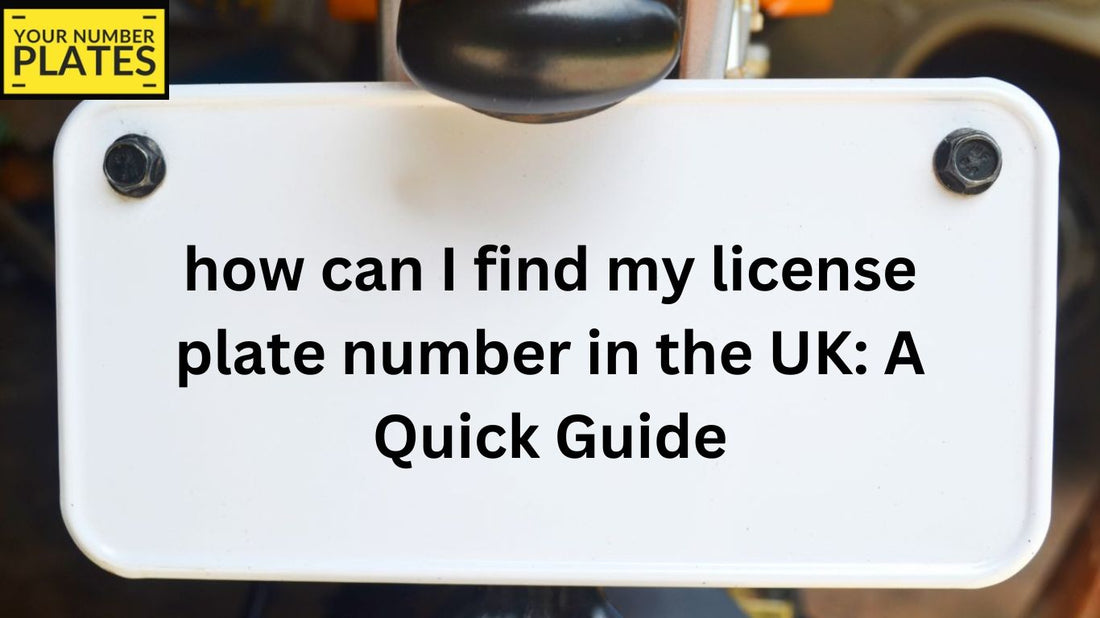Your license plate number is an indispensable identifier, linking your vehicle to official records and legal obligations. From paying taxes to filing insurance claims, there are countless reasons why you might need to locate it quickly. This guide provides a straightforward approach to finding your license plate number in the UK.
Understanding What a License Plate Number Represents
Every vehicle on UK roads is assigned a unique license plate number. This alphanumeric code is not merely decorative; it serves as a gateway to essential information such as ownership, taxation, insurance, and compliance with legal regulations.
Why You Might Need to Locate Your License Plate Number
Knowing your license plate number is vital in various situations:
- Renewing your vehicle tax through the DVLA.
- Submitting an insurance claim or updating policy details.
- Reporting your vehicle stolen to authorities.
- Applying for parking permits or accessing toll services.
Where to Find Your License Plate Number
Checking the Physical Vehicle
Start by examining your vehicle. The license plate is affixed to both the front and rear.
Exploring Personal Documents and Records
If the vehicle isn’t nearby, check your administrative documents for relevant information.
Vehicle Registration Certificate (V5C)
The V5C, commonly known as the logbook, is your most reliable source for the license plate number. This official document, issued by the DVLA, details all necessary vehicle information, including the registration number.
Insurance Policy Documents
Your car insurance records also include the license plate number. These documents, available both digitally and in print, serve as a backup when locating vehicle details.
MOT Certificates and Test Records
Annual MOT tests ensure that vehicles meet roadworthiness standards. The resulting certificates include the license plate number as part of the vehicle’s test history.
Government Correspondence
Official letters from the DVLA or local councils often feature the license plate number, whether for tax reminders, penalties, or other communications.
Online Resources for Retrieving License Plate Numbers
Using the DVLA’s Online Services
The DVLA offers an online portal for vehicle information retrieval. Enter basic details, such as the vehicle’s make and model, to access your registration number.
Accessing Insurer Portals
Many insurance providers have online platforms where you can log in to view policy details, including the license plate number.
Parking Permits and Digital Registrations
If you’ve registered your vehicle for local parking permits or toll services, the license plate number will appear on these confirmations. Check emails, printed permits, or app records for this data.
What to Do If You’ve Lost All Records
Contacting the DVLA for Replacement Documents
The DVLA can issue replacement V5C documents if the originals are lost.
Reporting Lost or Stolen Plates
In case your physical plates are missing, report the loss to the police and order replacements from authorized suppliers.
Steps to Avoid Losing Track of Your License Plate Details
- Save a photo of your license plate on your phone.
- Store scanned copies of essential documents in cloud storage.
- Use dedicated apps to consolidate and manage vehicle-related information.
The Importance of License Plate Numbers in UK Regulations
Your registration number ensures compliance with UK traffic laws. Misplacing this information could lead to complications in paying fines, taxes, or even retrieving your vehicle after theft.
Common Mistakes When Searching for a License Plate Number
- Depending on outdated or incomplete records.
- Forgetting to check digital insurance portals or parking systems.
- Neglecting to report missing documents promptly.
Conclusion and Best Practices
Keeping track of your license plate number is crucial. Organize your vehicle records, utilize digital storage solutions, and always have a backup plan. These small steps can save you from unnecessary stress and ensure seamless compliance with UK regulations.

